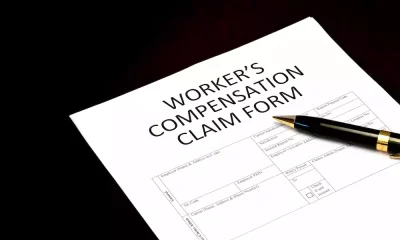Management
5 Aspects Of OSHA Employer Responsibilities

Did you know that American workplaces reported 5,190 fatalities in 2016? That equates to more than 14 deaths per day and 99 per week. Many of these casualties could have been prevented, which makes it even more crucial for you to comply with OSHA employer responsibilities.
OSHA compliance helps you establish and maintain a safe workplace. It’ll give you peace of mind, too. Read on for five essential things you need to know about your responsibilities as a business owner for the safety of your employees.
OSHA Coverage
To better understand OSHA compliance, let’s begin by looking at who it applies. Most private sector business owners and their employees must abide by OSHA.
But partial exemptions exist for small business owners with fewer than 10 employees. These employers do not need to keep OSHA illness and injury records unless specifically required by OSHA in writing. OSHA protections don’t cover local, state, or federal employees.
Exclusions also exist for self-employed workers and the immediate family members of those working in agriculture. If your employees don’t fall into these exemptions, then it’s time to delve into OSHA compliance.
1. Hazardous Materials Safety
As an employer, you must plan for situations that could affect the safety of your employees. This includes how to handle hazardous materials. You’ll need to provide employees with clear directives.
Workers also need to know how to deal with industrial accidents involving hazardous materials. Education remains key.
Make sure that your employees receive specific, consistent training. Also, make sure that all hazardous materials remain clearly labeled.
2. Emergency Action Plans
In an emergency, your employees need to know precisely how to respond. No guesswork should be involved.
This requires anticipating a variety of scenarios and then outlining clear safety procedures. Besides developing emergency action plans, part of your responsibility involves communicating these plans to your employees.
Put these contingency plans in writing. Then, keep copies on-site and easily accessible to employees. OSHA has clear guidelines on how to approach various emergency situations, so make them a primary resource in developing your workplace’s specific plans.
3. First Aid Resources
First and foremost, your workplace must remain stocked with a complete first aid kit that gets replenished regularly. This first aid kit should go beyond the basics and be custom-tailored to your workplace. That means it must address your industry’s most likely worker-related injuriesin.
For remote workplaces far removed from medical facilities, you must keep emergency personnel on-site, too. Contact an OSHA representative to determine whether your work location falls within the “remote” category.
They’ll also assess your business for specific hazards and risks. That way, you can guarantee your workplace stays safe and prepared.
4. Fire Safety Protocols
As with other emergency action plans, you need a specific protocol in place in the event of a fire. This should explain how employees can exit the building and identify emergency fire exits. It should detail fire safety rules once employees escape the building, too.
Again, keep a written copy of this plan at your work site. Make it easily accessible to employees. Fires can rush through a workplace, especially if hazardous materials become involved.
Your employees may not have much time to react. Ensure they are familiar with your plan and have practiced carrying it out. When seconds matter, do everything you can to ensure employees won’t hesitate.
5. Posting and Record-Keeping Regulations
OSHA outlines specific regulations for posting and record-keeping. For example, you must record every significant work-related injury or illness. Use the OSHA Log of Work-Related Injuries (Forms 300 and 300A).
You must also make these forms available to all current and former employees. That means keeping impeccable records.
Post an “OSHA Job Safety and Health: It’s the Law” poster prominently at your workplace. According to OSHA, this poster makes employees aware of their safety rights and expectations.
OSHA Employer Responsibilities
Making sure that your workplace remains OSHA-compliant can feel overwhelming. Fortunately, OSHA makes available specific resources for employers. Their On-site Consultation Program will help you assess your current level of compliance.
The program will then guide you to make the changes necessary to become (or remain) compliant. The advice given by the On-site Consultation Program remains confidential.
It will not result in repercussions for the current lack of compliance. The program has no relationship to OSHA’s enforcement branch. So, consulting them will not result in citations or penalties.
But soliciting their advice will help you rest easier at night. You’ll know you’ve done everything possible to be OSHA compliant. You’ll also see that you’ve taken every precaution to ensure the safety of your employees.
That way, your next visit from an OSHA compliance officer will go uneventfully. You’ll feel confident you’ve met OSHA safety requirements.
Staying on top of OSHA compliance will save your company time, money, and headaches. Like Atlantic Crane, you need to stay informed about the latest news in OSHA compliance. And you must make these safety requirements clear and understandable to your employees.
OSHA Compliance
OSHA compliance protects you and your employees from injuries, lawsuits, and even fatalities. Following the five abovementioned regulations will ensure that your workplace remains OSHA-compliant.
But you’ll also want to seek out the advice of the On-site Consultation Program for evaluation. They’ll show you how you can continue to make your employees’ safety a top priority.
OSHA Employer Responsibilities
Most of the tips above list stem from common sense best practices. Nonetheless, they prove easy to neglect or put off when things get stressful in the workplace.
Don’t procrastinate when it comes to your OSHA Employer Responsibilities. Plan for the future and ensure you and your employees know exactly what to do when an emergency arises.
At BusinessBlogs, we’re here to help. We want to ensure you stay informed about the news most affecting your company and industry. Contact us today with your questions or concerns and make us your number one business news resource.









